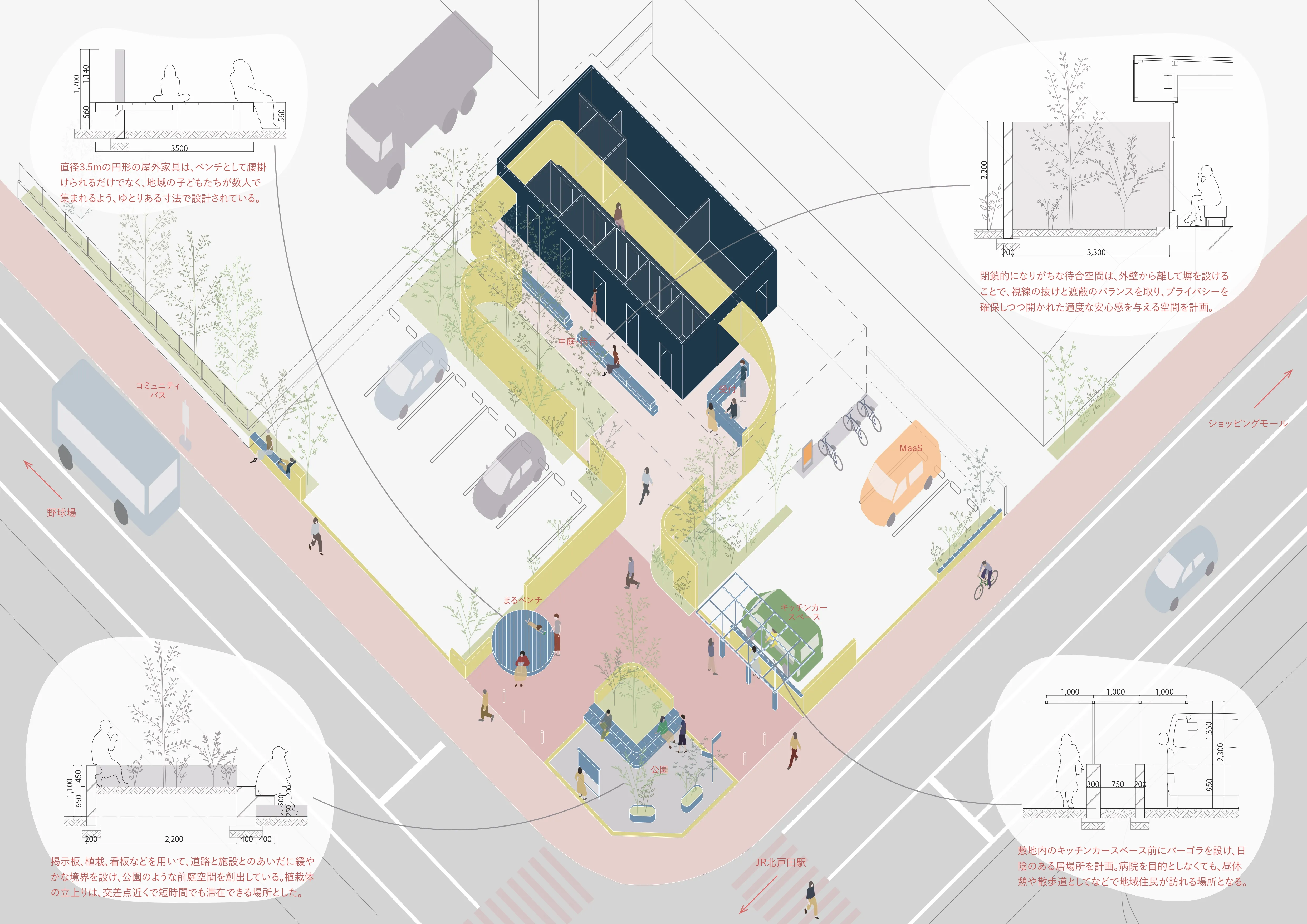
LeMon Clinic Kitatoda
This project involves the conversion of an existing convenience store into a medical clinic, offering both internal medicine and gynecology services.
The site is situated within an industrial zone, characterized by large-scale factories, warehouses, shopping malls, public housing, and a baseball stadium, each occupying expansive plots. The surrounding landscape presents a monotonous tableau, defined by these facilities, their enclosing fences, and formally arranged plantings. However, there's a noticeable presence of pedestrians and cyclists from nearby schools and residential areas, underscoring the need to create inviting spaces that cater to the community.
Our design approach embraces this existing landscape rather than negating it. We've sought to introduce a human scale by symbolically referencing and incorporating elements like fences and plantings, which are prevalent in the area. These elements, traditionally used to delineate boundaries, are reinterpreted to actively draw people into the site and encourage them to linger.
The existing convenience store building will remain largely untouched, serving primarily as a boundary between interior and exterior. The goal is to create a clinic that doesn't stand as an isolated structure within a vast site, but rather one that seamlessly integrates with the streetscape and the daily lives of residents. We envision a clinic where the experience of passing through the neighborhood naturally transitions into a visit, fostering a sense of connection and accessibility.
Read more
Read less




LeMon Clinic Kitatoda
This project involves the conversion of an existing convenience store into a medical clinic, offering both internal medicine and gynecology services.
The site is situated within an industrial zone, characterized by large-scale factories, warehouses, shopping malls, public housing, and a baseball stadium, each occupying expansive plots. The surrounding landscape presents a monotonous tableau, defined by these facilities, their enclosing fences, and formally arranged plantings. However, there's a noticeable presence of pedestrians and cyclists from nearby schools and residential areas, underscoring the need to create inviting spaces that cater to the community.
Our design approach embraces this existing landscape rather than negating it. We've sought to introduce a human scale by symbolically referencing and incorporating elements like fences and plantings, which are prevalent in the area. These elements, traditionally used to delineate boundaries, are reinterpreted to actively draw people into the site and encourage them to linger.
The existing convenience store building will remain largely untouched, serving primarily as a boundary between interior and exterior. The goal is to create a clinic that doesn't stand as an isolated structure within a vast site, but rather one that seamlessly integrates with the streetscape and the daily lives of residents. We envision a clinic where the experience of passing through the neighborhood naturally transitions into a visit, fostering a sense of connection and accessibility.
Read more
Read less
2025
Location:
Saitama, Japan
Client:
Jikokai Medical Corporation
Status:
Ongoing
Program:
Clinic
Team
Direction: Hiroaki Suzuki
Design: Mire Kan, Yoshifumi Hashimoto,
Yusaku Kimura
Collaborators


